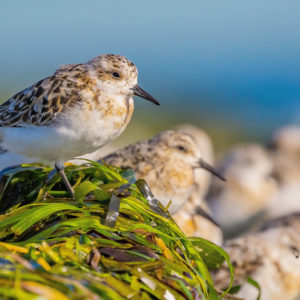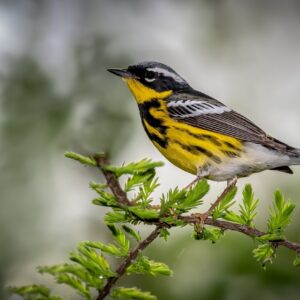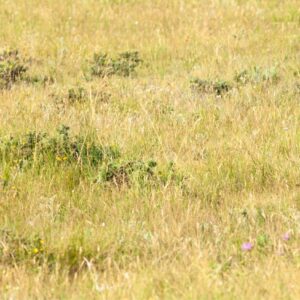The Yellow-Headed Blackbird — a Very Special Harbinger of Spring
Thank you to our Nature Network partner, Saskatoon Nature Society, for sharing this month’s blog.
I must say right off the top that I am not an ornithologist or even most likely a very good birder, but I am very enthusiastic about birds and always willing to learn a little more about them.
I jumped right in on this invitation to do this blog, always happy to do a bit of summer research on the impressive Yellow-headed Blackbird, which some call “the king of the prairie marsh,” a bird that has always intrigued me. I think it goes back to growing up in Saskatchewan and watching birds return in the spring to the prairie sloughs — sometimes there were Yellow-heads but other years not. It didn’t make a lot of sense to me back then, but since that time I have learned that their presence is very much tied to the drought cycles of which, as a prairie kid, I was very much aware. So, to this day when, in spring, I see Yellow-headed Blackbirds in my familiar ponds, I am comforted that the wetlands are strong and recharged and that hopefully it will be a good wet year!
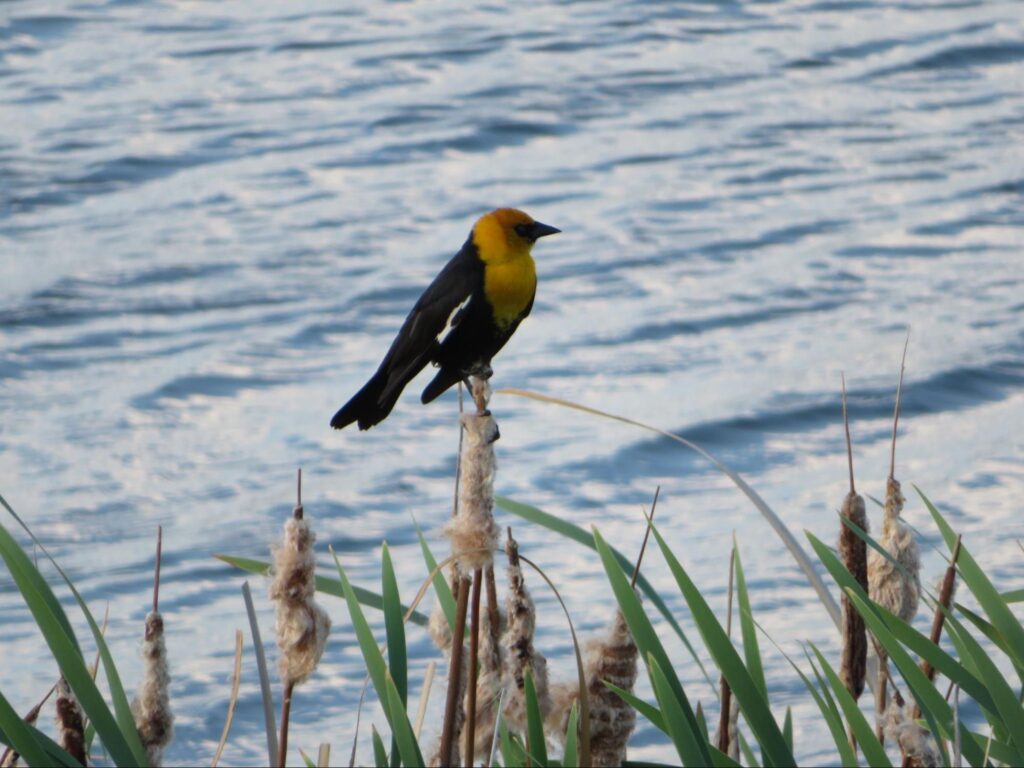
Yellow-headed blackbird (Photo David Forbes)
Much has been written and exists online about the Yellow-headed Blackbird. We have in Saskatchewan some excellent bird resources, especially our own Birds of Saskatchewan edited in 2019 by Alan R. Smith, C. Stuart Houston and J. Frank Roy. Joan Feather of the Saskatoon Nature Society has also written a great research piece on the Yellow-headed Blackbird, so I won’t re-invent the wheel but instead will give you a short summary. I’ll also provide a word on the spiritual thinking about Yellow-heads and say in conclusion why the Yellow-headed Blackbird is such an essential bird in our world, where wetlands are being threatened.
I should also note that Birds Canada’s open data platform NatureCounts tells us that The Canadian population of the Yellow-headed Blackbird breeds primarily in marshes of the Prairies, with smaller numbers in British Columbia and southwestern Ontario. The species overwinters primarily in northern Mexico and the southwestern United States. There are approximately 2.6 million individuals in Canada, representing 24% of the global population. The good news is that the Canadian population of the Yellow-headed Blackbird has shown a moderate increase since 1970.
Who are these birds, anyway?
In short, Joan Feather writes that the Yellow-headed Blackbird (scientific name Xanthocéphalus xanthocéphalus) is one of the easiest to identify since the common name of the bird matches its most obvious physical feathers. No other North American bird has such a striking yellow head and black body. The male shows white patches on the wing when it is perched or flying. This combination of gold, black and white is distinctive and conspicuous. And these birds are relatively large, about robin-size. It should be noted that there is a South American cousin, the Yellow-hooded Blackbird, that is found in grassy and brush areas near water in northern South America. It resembles the larger Yellow-headed Blackbird of North America, except that the male Yellow-hooded Blackbird lacks white in the wings.
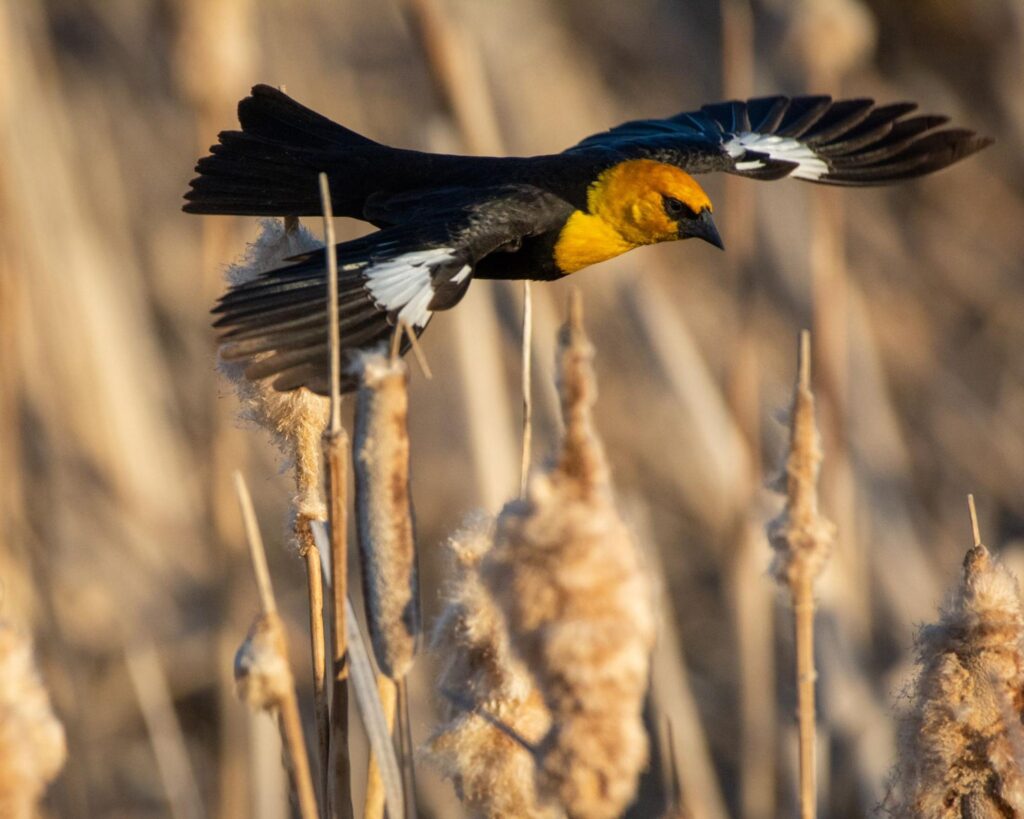
Yellow-headed Blackbird in flight (photo Peter Goode)
While the Yellow-head male is unmistakable, the female may be overlooked. It is slightly smaller than the male and greyish brown overall, with a yellow chin and throat and white streaking on the lower breast.
Joan continues to write that in normal wet years, the highly gregarious Yellow-headed Blackbird nests in dense cattails and bulrushes in deepwater marshes or at the margins of dams, dugouts and lagoons. They are also known to gather in large numbers, such as the time a large cloud or “grind” of over 1200 Yellow-heads were seen at Eyebrow Lake in Saskatchewan in June 1990.
While the Yellow-heads may share freshwater marshes with Red-Winged Blackbirds, they want to inhabit the centre of the marsh, pushing the red-wings out to the fringes. Yellow-heads, being larger and more aggressive, can exclude their cousins from the deeper water and more productive food and nest spaces. If it is a drought year, the Yellow-heads may not be present at all but will instead be looking for wetter areas.
Many have noted the Yellow-headed Blackbird’s unique voice, saying it sounds like a rusty hinge — the low, rasping notes end in a long descending buzz — but it sounds beautiful to the female Yellow-head. A male, especially where he holds a high-quality territory, will mate with up to 8 females — his harem!
By late summer, Yellow-headed Blackbirds join other blackbirds in mixed flocks, visiting stubble fields by day, then roosting at night in the safety of the marsh. By the end of September, these colourful birds have departed for their winter homes.
In conclusion, here are a couple of interesting facts about the Yellow-head: there are 9 other species that fall under the term “blackbird” here in North America, but of course the Yellow-Head is the most eye-catching. The second is that the oldest known Yellow-head was determined to be at least 11 years and 8 months old, as it was banded here in Saskatchewan in 1983 by one of Saskatoon’s best-known bird banders, Jim Slimmon, who now has a major street named after him that links our two naturalized parks. This bird was later found in Nebraska in 1995.
The Spiritual Connection
Much has been said about the Yellow-headed Blackbird throughout time; largely because of its unmistakable beauty, the bird often recalls bigger, more meaningful life experiences. Spirit and Symbolism.com writes that many Indigenous cultures have attached significant meaning to the Yellow-headed Blackbird, including beliefs that the Yellow-headed Blackbird can bring healing, strength, courage, and renewal. This species is seen as a messenger between the physical and spiritual worlds. For generations, it has been said that the Yellow-head can help us bridge the gap between our innermost thoughts and connect us to natural forces. In Christian symbolism, the species can mean freedom and represent the Holy Spirit.
So, when you see a Yellow-headed Blackbird, you know you are in the presence of an amazingly beautiful bird that brings much meaning to many here in North America.
The Future for Yellow-headed Blackbirds
Indeed, the Yellow-headed Blackbird is a very exceptional bird. As I wrote earlier, the biggest challenge facing the Yellow-head each spring is disappearing wetlands. This loss of habitat has two causes: destruction and drought, both of which are principally caused by people. In Saskatchewan we see wide-spread destruction of wetlands largely in the name of creating more cropland. This year, in Saskatchewan, we saw the provincial government release an agricultural drainage wetlands policy under the guise of being a progressive conservation policy. It is far from that. Among its many weaknesses, it has no zero-net loss policy, allowing for a decline in overall wetlands. So wetlands are under increasing threat here as they are across the grasslands of North America. We need to take action to reverse this loss of this critical natural habitat.
The second challenge is that of drought. In my reading, I came across many observations of the decline of Yellow-heads during the Great Depression of the 1930s, and of other drought cycles (not surprisingly). It was good news when they bounced back afterwards, but we are facing more and more dry summers here in the west that again are caused by a largely man-made climate crisis and our carbon emissions!
So, what can we do about this situation the Yellow-heads are warning us about? Protect wetlands and control and decrease our emissions to help our planet cool! It’s a big challenge, but this fall, when we see the Yellow-heads go south and wait for them to come back in the spring to our prairie sloughs, let’s not depend on luck but our work and commitment to welcome them back!
About the author: Originally from the Moose Jaw area, David was raised in the village of Mortlach as part of a farming family. He taught in Saskatchewan schools from the early 1980s until he ran for public office in 2001 as MLA for Saskatoon Idylwyld/Centre, serving until 2019. He served in Premier Lorne Calvert’s cabinet as Minister of Environment for three years.
Want to help Canadian species like the Yellow-Headed Blackbird and more? Be a voice for Nature and send a personal letter to the Prime Minister, Environment Minister, and the Oceans Minister demanding wildlife protection.

